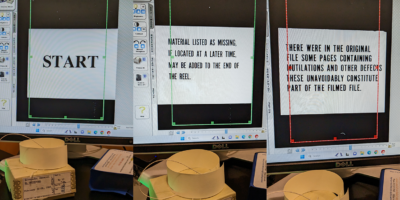By Inés Vañó García
After my first post about how I integrated the CUNY Academic Commons into my SPA-114 Spanish Heritage course last Fall at Lehman College, I would like to share several teaching and learning practices inspired by Socially Conscious Pedagogy that I implemented in my course. From this critical perspective, there is an urgent need to challenge the traditional methodology in language instruction, which tends to privilege the core skills (speaking, listening, reading and writing) through attention to grammar, vocabulary, and culture. My proposal conceptualizes language courses as content courses in which we must create a teaching and learning environment to foster inquiry; motivate students to be creative and active critical thinkers; and promote interactions, spaces, and opportunities to explore, discover, review and reflect on any aspect related to the (Spanish) language from political, socio-historical, and cultural points of views. By sharing my journey, I hope to motivate other graduate students to re-think their pedagogical strategies, and above all, to encourage them to not be afraid of experimenting, and to take risks in their daily teaching and learning practices.
One of my main concerns, and a topic that has drawn my attention for quite some time now, has been the requirement of textbooks within language courses, along with the affordability of this material for our CUNY students. Since I had some freedom to create content for this course, I decided to get rid of the textbook. Although I was already familiar with the designs of multiples textbooks for Spanish Heritage Speakers, one of the main aspects that I wanted to overcome was the traditional chapter organization based on grammatical points and readings divided by country. Although I do agree that students should have a knowledge of the Spanish-speaking world, most of the textbook readings are solely descriptive, and do not engage or challenge students as critical learners.
Following a Socially Conscious Pedagogy approach, I was invested in making my students aware of my teaching practices and their methodological implications. Since I wanted to be honest and transparent in my decisions, I made my narrative and goals for the semester explicit to my students from day one. To do so, I shared the following quote and discussed it in class:
[To] help students critically understand their own lives and worlds, develop agency in making their own language choices, and participate in the building of a more democratic society, educators must make the relationship between language and sociopolitical issues explicit, provide opportunities for students to examine and interrogate dominant linguistics practices and hierarchies, and encourage students to explore the ways language can be used to perform a wide range of social functions and identity work (Leeman, 2005: 36, full article here).
By sharing my pedagogical philosophy, and making my intentions explicit to my students, I helped students to be more prepared to face challenging readings, be active participants in class discussions, and be aware of and question their own linguistic practices and understandings of identity. Among the readings, I included texts by Gloria Anzaldúa, Giannina Braschi, Silvia Molloy, multiple nuyorican poets (Tato Laviera, Jesús Papoleto Menéndez, Sandra María Esteves), among others. These readings, compared to the traditional descriptive texts, share a translingual perspective that relates to students’ personal experiences. Moreover, we had the opportunity to read a selection of poems from Nueva York sin querer by Almudena Vidorreta about the Bronx, my Lehman students’ neighborhood. I also invited the poet as a guest speaker to the class, which allowed for a more personal and critical discussion of the poems. It was the first time that I had a guest in my language class and my students were excited to ask her specific questions about her writing intentions and interpretations.
I also try to make my students active participants in the design of the course’s content by allowing them to select readings and by making sure that their expectations were met. Students chose short stories or other texts and shared them with their classmates, leading in-depth class discussions on their selections. By doing so, students’ voices and choices had a prominent role and impact, allowing them to take control of and responsibility for their learning experience.
In my case, of course, I did not have time to design every single activity and assignment from scratch. While the required grammar structures were introduced through the readings, I made use of practice material from different textbooks. Here is an instance, though, where my students’ immediate reaction and subsequent discussion to the following expert went beyond the grammatical and linguistic:
15. grosería, bodega
a. Hablar con la boca llena es una __________________.
b. Los dominicanos son dueños de muchas __________________ en Nueva York.
(Although I am consciously not providing a word-by-word translation of this excerpt, this is an example within a larger exercise about (false) cognates in Spanish and English that aims to reflect on individuals’ linguistic and social practices).
In this case, the vocabulary lesson about cognates and loanwords was pushed to the background, and students took an active role in discussing overcoming stigmatized linguistic repertoires along with social and racial stereotypes. Students’ voices were actively engaged, thinking critically about the connections between language and power structures, pushing to challenge the societal status quo which, as this example illustrates, is reproduced and invisibilized by many textbooks.
Last but not least, I want to confess that I also felt (and I still do) a constant uncertainty about using new pedagogical practices. Although I do not think that this feeling is going away (at least not any time soon), I believe that we can find specific moments and spaces in our courses to assess the growth of our students’ inquiry and critical thinking skills.
Inés Vañó García is a Ph.D. candidate in Latin American, Iberian and Latino Cultures at the Graduate Center and a Humanities Alliance Graduate Fellow.









Leave a Reply